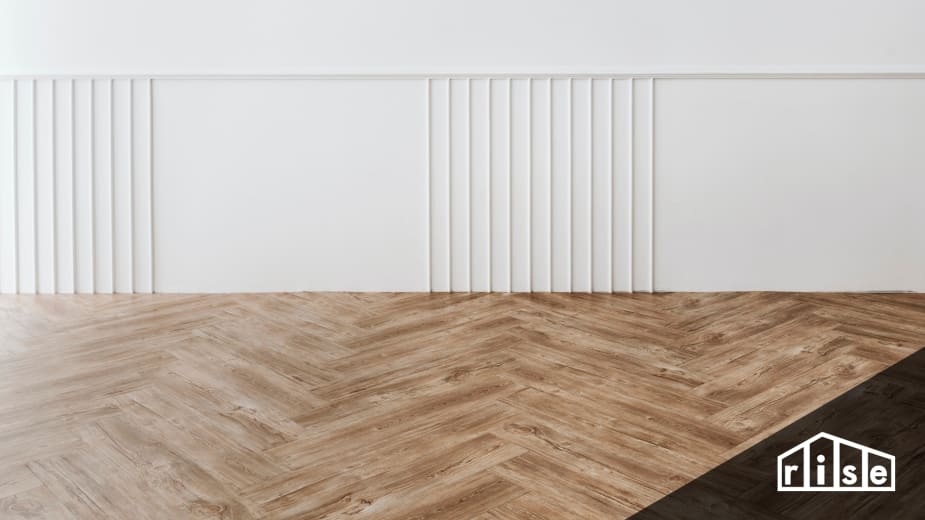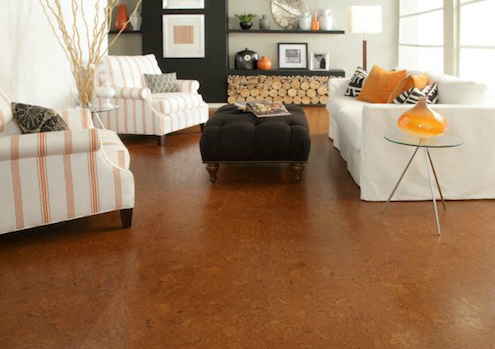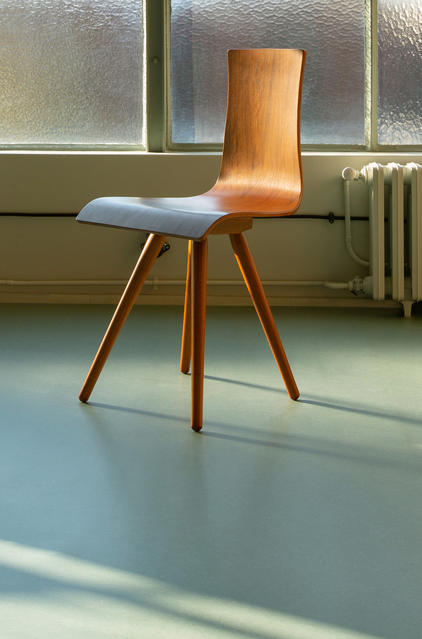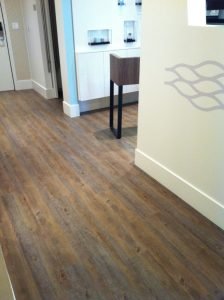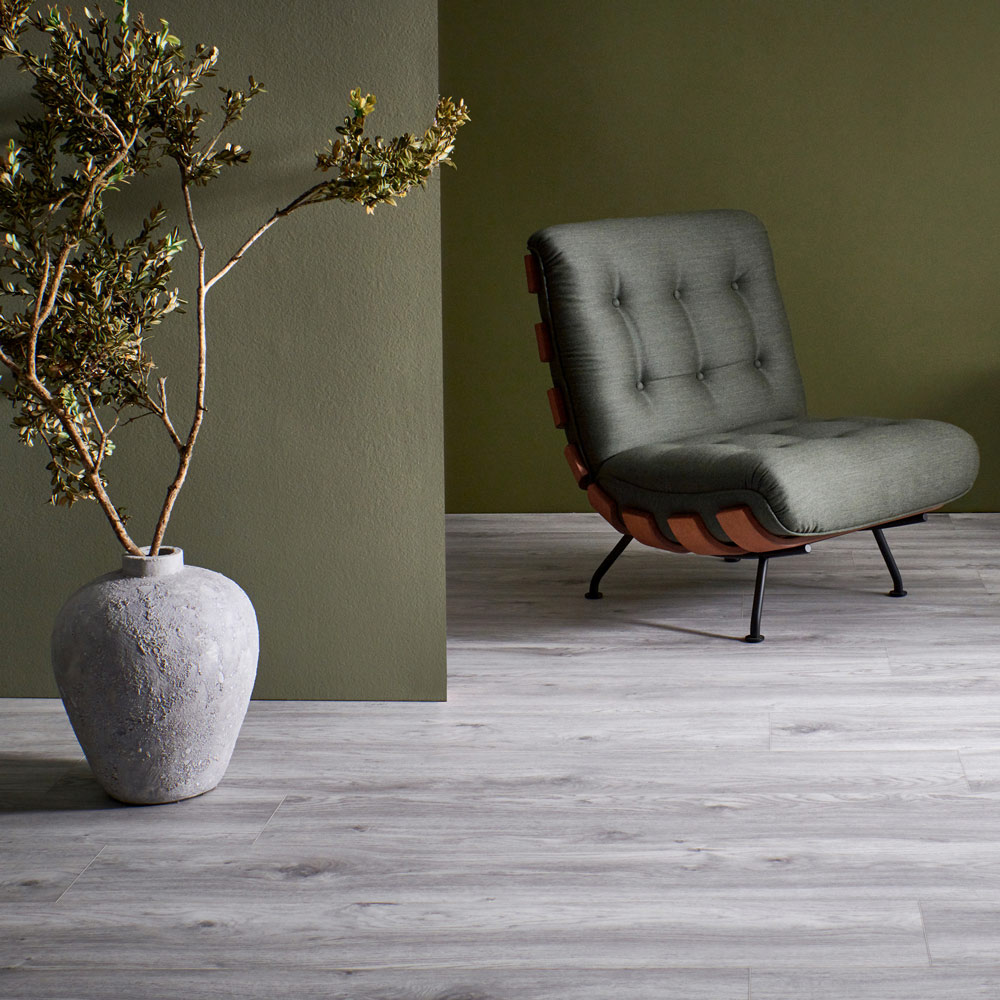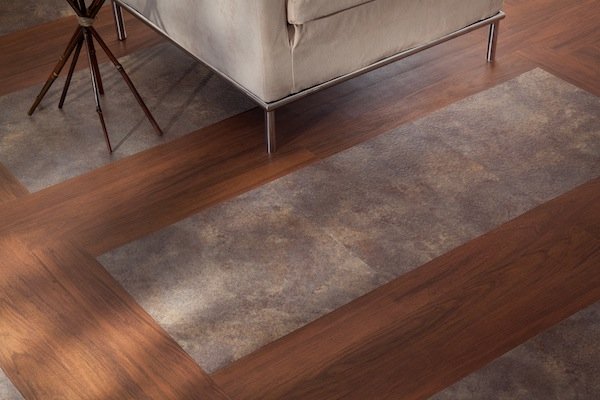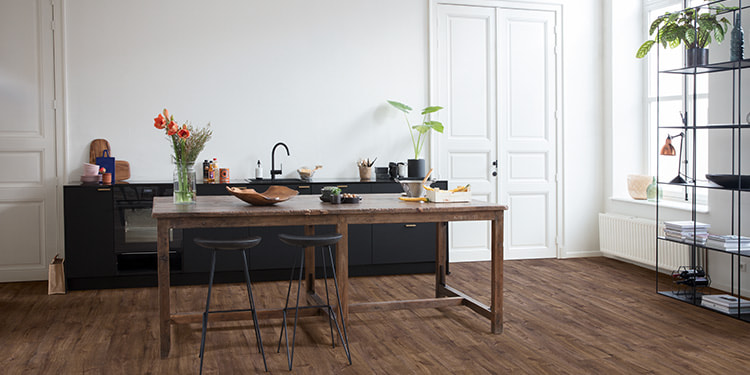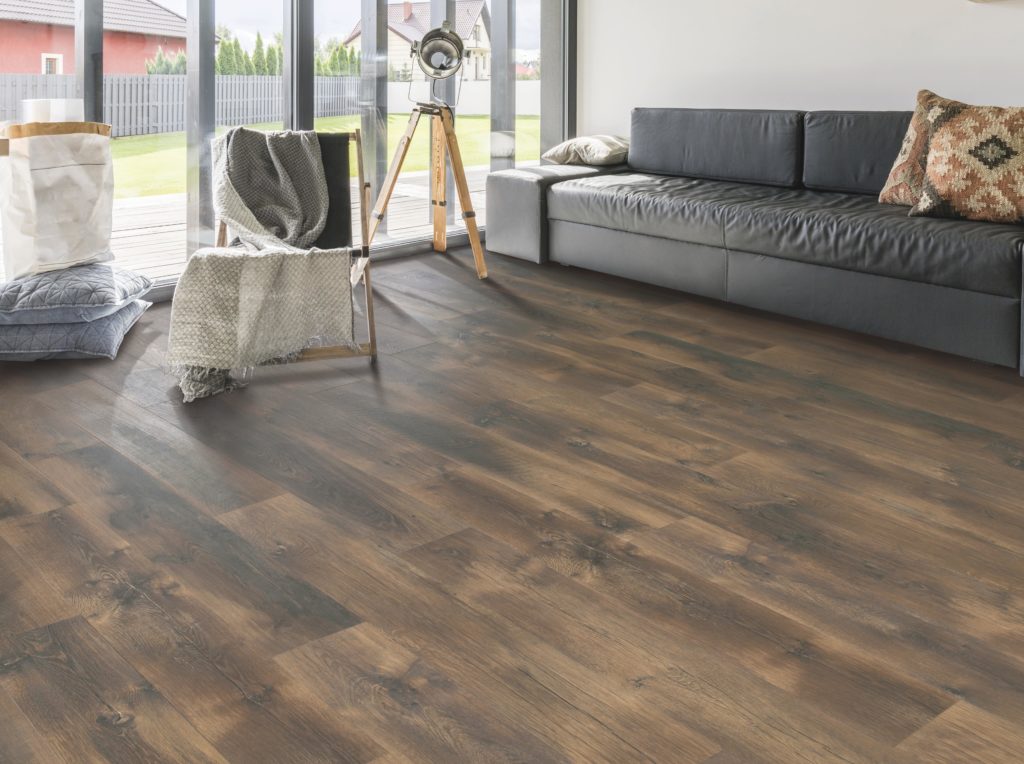Understanding Sustainable Vinyl Flooring
Vinyl flooring has long been a popular choice for homeowners due to its durability, affordability, and ease of maintenance. However, in recent years, there has been a growing interest in sustainability, leading to the development of sustainable vinyl flooring options. This article will provide an in-depth look into what makes vinyl flooring sustainable and why it is becoming an increasingly popular choice for eco-conscious consumers.
- Definition and Basics: Sustainable vinyl flooring refers to vinyl products that are designed and manufactured with environmental considerations in mind. This can include using recycled materials, reducing energy consumption during production, and ensuring the flooring can be recycled at the end of its life. These practices help minimize the environmental impact associated with traditional vinyl flooring.
- Why Sustainability Matters: Sustainability in flooring is important because it addresses several environmental concerns. Traditional vinyl flooring can have a significant carbon footprint due to the energy-intensive production processes and the use of non-renewable resources. By choosing sustainable options, consumers can reduce their environmental impact and contribute to a healthier planet.
- Types of Sustainable Vinyl Flooring: There are various types of sustainable vinyl flooring available on the market. These include luxury vinyl tiles (LVT) made with recycled content, bio-based vinyl floors that use renewable raw materials, and products certified by environmental standards such as FloorScore or GreenGuard. Each type offers unique benefits and caters to different preferences and needs.
- Performance and Durability: One common misconception is that sustainable flooring might compromise on performance or durability. However, sustainable vinyl flooring is designed to meet high standards of durability and performance, making it suitable for high-traffic areas and resistant to wear and tear. This ensures that eco-friendly choices do not come at the expense of quality.
- Cost Considerations: While sustainable vinyl flooring can sometimes be more expensive upfront compared to traditional options, it often proves cost-effective in the long run. The durability and lower maintenance costs associated with these products can lead to savings over time. Additionally, investing in sustainable materials supports a market that prioritizes environmental responsibility.
- Future Trends and Innovations: The market for sustainable flooring is rapidly evolving, with continuous innovations aimed at enhancing both the environmental and functional aspects of vinyl flooring. Future trends include the development of fully recyclable flooring, advancements in the use of bio-based materials, and increased transparency in the supply chain to ensure ethical sourcing and manufacturing practices.

Environmental Benefits of Sustainable Vinyl Flooring
As sustainability becomes a key consideration in home improvement and construction, understanding the environmental benefits of sustainable vinyl flooring is crucial. This section explores how choosing sustainable vinyl flooring can contribute to environmental conservation and promote a healthier planet.
Reduced Carbon Footprint
Sustainable vinyl flooring is produced using processes that significantly reduce carbon emissions. Manufacturers achieve this by utilizing renewable energy sources, improving energy efficiency, and incorporating recycled materials. This reduction in carbon footprint helps mitigate climate change and supports global efforts to lower greenhouse gas emissions.
Use of Recycled Materials
One of the major environmental benefits of sustainable vinyl flooring is the incorporation of recycled content. By using post-consumer and post-industrial waste, manufacturers can divert significant amounts of waste from landfills. This not only conserves natural resources but also reduces the environmental impact associated with the extraction and processing of virgin materials.
Resource Conservation
Sustainable vinyl flooring often utilizes bio-based materials derived from renewable sources such as corn, soybeans, or other plant-based materials. These bio-based materials reduce dependency on non-renewable resources like petroleum, promoting a more sustainable use of natural resources. Additionally, the production processes for these materials typically have a lower environmental impact.
Improved Indoor Air Quality
Indoor air quality is a critical aspect of a healthy living environment. Many sustainable vinyl flooring options are designed to emit low levels of volatile organic compounds (VOCs), which can contribute to healthier indoor air. Products that meet certification standards such as FloorScore or GreenGuard ensure that harmful emissions are minimized, creating a safer and more comfortable home environment.
Recyclability and End-of-Life Management
A key advantage of sustainable vinyl flooring is its potential for recyclability. Some products are designed to be fully recyclable at the end of their life, reducing waste and promoting a circular economy. By choosing recyclable flooring options, consumers can help close the loop and support the creation of new products from old materials, minimizing landfill waste.
Supporting Sustainable Practices
Opting for sustainable vinyl flooring supports broader environmental initiatives and encourages manufacturers to adopt greener practices. As demand for sustainable products grows, companies are more likely to invest in eco-friendly technologies and processes. This collective effort can lead to significant environmental benefits, including reduced pollution, conservation of ecosystems, and better resource management.
Materials and Manufacturing Processes
The materials and manufacturing processes used in sustainable vinyl flooring are critical to understanding its environmental impact. This section delves into the components that make up sustainable vinyl flooring and the methods used to produce it, highlighting how these contribute to a more eco-friendly product.
Recycled Content
One of the primary materials used in sustainable vinyl flooring is recycled content. This can include post-consumer waste such as old vinyl flooring or industrial scraps that are reprocessed and integrated into new flooring products. Using recycled materials reduces the need for virgin resources and minimizes waste, contributing to a more sustainable manufacturing cycle.
Bio-Based Materials
Bio-based materials are another significant component of sustainable vinyl flooring. These materials are derived from renewable sources like corn, soybean, and other plant-based substances. Bio-based vinyl flooring can reduce reliance on petroleum-based products, offering a more environmentally friendly alternative. Additionally, the cultivation of these plants can support agricultural communities and promote sustainable land use practices.
Energy-Efficient Manufacturing
The production of sustainable vinyl flooring often involves energy-efficient manufacturing processes. Companies may use renewable energy sources, such as wind or solar power, to reduce their carbon footprint. Additionally, advances in technology have led to more efficient machinery and production techniques, further minimizing energy consumption and emissions during the manufacturing process.
Water Conservation
Water is a critical resource in many manufacturing processes, including the production of vinyl flooring. Sustainable manufacturers implement water conservation measures to reduce their water usage. This can involve recycling water within the production process, using water-efficient machinery, and adopting practices that minimize water waste. These efforts help conserve this vital resource and reduce the overall environmental impact.
Reduction of Harmful Chemicals
Traditional vinyl flooring can contain harmful chemicals such as phthalates and heavy metals, which can be detrimental to both human health and the environment. Sustainable vinyl flooring manufacturers strive to eliminate or significantly reduce the use of these substances. By using safer alternatives and adhering to strict environmental standards, these products are less likely to release harmful pollutants during their lifecycle.
Lifecycle Assessment and Transparency
Sustainable flooring manufacturers often conduct comprehensive lifecycle assessments (LCA) to evaluate the environmental impact of their products from production to disposal. This transparency allows consumers to make informed choices and encourages manufacturers to continuously improve their practices. By providing detailed information on the environmental performance of their products, companies can build trust and demonstrate their commitment to sustainability.
Design Options and Aesthetic Versatility
Sustainable vinyl flooring doesn’t just offer environmental benefits; it also comes with a wide range of design options and aesthetic versatility. This section explores how sustainable vinyl flooring can meet diverse design preferences while maintaining its eco-friendly attributes.
Variety of Styles and Patterns
Sustainable vinyl flooring is available in an extensive array of styles and patterns, making it easy to find options that suit any interior design theme. Whether you’re looking for the classic appearance of hardwood, the sleek look of stone, or contemporary geometric designs, sustainable vinyl flooring can replicate these aesthetics with remarkable realism.
Color Choices
The color palette for sustainable vinyl flooring is vast, offering everything from neutral tones to bold, vibrant hues. This variety allows homeowners to match their flooring with existing decor or to create a completely new look. The use of advanced printing technology ensures that colors are rich and consistent, enhancing the overall visual appeal of the space.
Texture and Finish
In addition to visual variety, sustainable vinyl flooring offers a range of textures and finishes. Options include smooth, high-gloss finishes for a modern look, or textured surfaces that mimic the feel of natural materials like wood or stone. These textural choices add depth and dimension to the flooring, making it a tactile as well as a visual experience.
Customization Options
For those seeking a truly unique look, many manufacturers offer customization options for sustainable vinyl flooring. This can include custom colors, patterns, and even bespoke designs that reflect personal taste or brand identity. Customization ensures that the flooring not only meets environmental standards but also fits perfectly with the specific aesthetic vision.
Compatibility with Various Interiors
Sustainable vinyl flooring is versatile enough to complement various interior design styles, from traditional to contemporary and everything in between. Its adaptability makes it suitable for use in different settings, including residential homes, commercial spaces, and public buildings. The durability and easy maintenance of vinyl flooring make it a practical choice for high-traffic areas while still offering aesthetic appeal.
Future Trends in Design
The design possibilities for sustainable vinyl flooring continue to evolve, with emerging trends focusing on even more realistic natural looks, innovative patterns, and the integration of smart technology. Future advancements may include interactive flooring that changes color or pattern in response to environmental conditions or user preferences. As technology progresses, the aesthetic versatility of sustainable vinyl flooring is expected to expand further, providing even more options for creative and eco-friendly design.
Installation and Eco-Friendly Practices
Installing sustainable vinyl flooring involves several eco-friendly practices that not only enhance the environmental benefits of the product but also ensure a high-quality installation. This section outlines the steps and considerations for installing sustainable vinyl flooring in an environmentally responsible way.
Preparing the Subfloor
Proper preparation of the subfloor is crucial for the successful installation of vinyl flooring. This involves cleaning and leveling the surface to ensure it is smooth and free of debris. Using environmentally friendly cleaning products and ensuring minimal waste during the preparation process can contribute to the overall sustainability of the installation.
Choosing Eco-Friendly Adhesives
The adhesives used in the installation process can have a significant impact on indoor air quality and the environment. Selecting low-VOC (volatile organic compound) or VOC-free adhesives is essential for maintaining a healthy indoor environment and reducing harmful emissions. Many sustainable vinyl flooring products are designed to work with these eco-friendly adhesives, ensuring a secure and safe installation.
Efficient Installation Techniques
Using efficient installation techniques can help minimize waste and reduce the environmental impact of the project. Techniques such as dry laying or click-and-lock systems eliminate the need for adhesives, making the installation process cleaner and quicker. Additionally, these methods can make it easier to remove and recycle the flooring at the end of its life.
Minimizing Waste
During the installation process, it is important to minimize waste by accurately measuring and cutting the vinyl flooring. Any leftover materials should be recycled if possible. Some manufacturers offer take-back programs or recycling services for unused or old vinyl flooring, further reducing waste and promoting a circular economy.
Post-Installation Practices
After the installation is complete, maintaining an eco-friendly environment involves using green cleaning products and methods. Regular cleaning with environmentally friendly products helps preserve the flooring’s appearance and longevity while also protecting the indoor air quality. Additionally, ensuring proper ventilation during and after installation can help dissipate any residual emissions from adhesives or other materials.
Professional vs. DIY Installation
Deciding between professional and DIY installation can also impact the sustainability of the project. Professional installers typically have the experience and tools to complete the job efficiently and with minimal waste. However, a well-informed DIY installation can be equally effective if done carefully. Regardless of the choice, following best practices and using sustainable materials and methods is key to achieving an eco-friendly installation.
iQ Natural sustainable vinyl flooring u2013 Tarkett
iQ Natural sustainable vinyl flooring u2013 Tarkett
Eco-Friendly Vinyl Flooring For Your Home – Eco Floor Store
Luxury vinyl flooring for any room Moduleo
Learn Why Salt Makes Vinyl Both Sustainable and Affordable
Everything you need to know about Vinyl flooring Tarkett
Conscious vinyl flooring
Fantastic Eco-Friendly Flooring Options
Related Posts:
